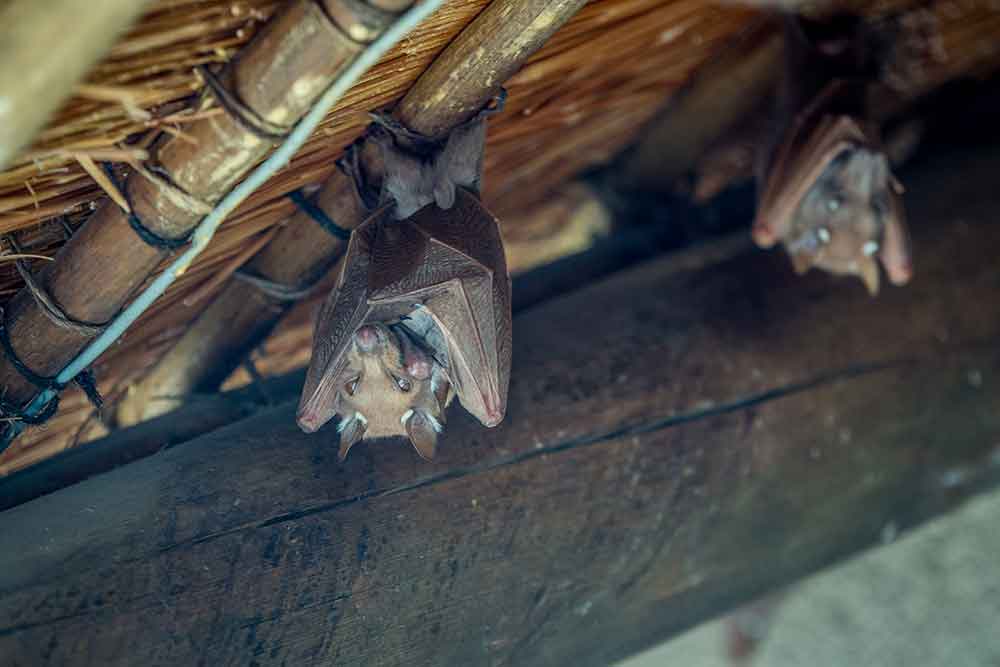Bats are often misunderstood. They’re quiet, they fly at night, and they help control insects—what’s not to like? But when a colony takes up residence in your attic, the damage can go far beyond spooky vibes. At a bat removal company like Safer Nature Pest Control, we’ve seen how quickly a small bat problem can turn into an expensive home repair bill—especially in older homes across Amesbury, Newburyport, Hamilton, and Wenham.
Here’s what you need to know about the risks bats pose to your home and when it’s time to call in professional bat removal companies.
Why Bats Love Your Attic
Bats are drawn to attics for the same reason you are drawn to your cozy bed—warmth, shelter, and quiet. In New England towns, where older homes are common and insulation isn’t always airtight, bats can find tiny gaps in roofing or fascia boards to squeeze through. A bat needs just ½ inch of space to gain entry.
Homes with:
Unsealed rooflines
• Chimneys without proper caps
• Gaps in soffits or vents
…are practically an open invitation.
Signs Bats Are Damaging Your Home
You might not see bats right away, but their presence leaves clues. Here are the most common signs:
1. Guano (Bat Droppings) Accumulating
Bats often roost in colonies. That means the guano piles up fast. Over time, this waste builds up in insulation and can cause wood rot, staining, and an overpowering ammonia smell from the urea. Guano can also grow histoplasma fungus, which leads to a serious lung infection called histoplasmosis in humans.
2. Noisy Attic at Dusk and Dawn
Hearing fluttering or scratching noises in the walls or ceiling, particularly around dusk or dawn? That’s a strong sign bats are coming and going.
3. Drooping or Discolored Insulation
Bat urine and droppings can saturate attic insulation. Over time, this causes insulation to sag, compress, or lose effectiveness, leading to higher energy bills and potential mold growth.
4. Staining or Greasy Smudges Near Openings
Bats leave behind oils from their fur at entry and exit points, which can show up as dark smudges near gable vents or soffit edges.
Why DIY Bat Removal Usually Goes Wrong
Removing bats on your own might seem like a weekend project, but it rarely ends well. Here’s why:
- Bats are federally protected in many states, including Massachusetts. Removing them improperly—especially during birthing season—can be illegal.
- Improper sealing traps bats inside, causing them to die in the walls or return through new entry points.
- DIY cleanup of guano is dangerous. The airborne particles can be hazardous if not handled with protective gear and proper HEPA filtration.
Instead of risking your health (and a potential wildlife violation), rely on licensed professionals who specialize in safe and humane exclusion.

Can Bats Cause Structural Damage?
Yes. Over time, moisture from guano can weaken wooden beams, rot floorboards, and corrode metal fasteners. Not to mention the long-term impact on your home’s air quality and energy efficiency.
In towns like Ipswich and Newbury, where many homes date back over a century, bat-related damage can spiral quickly. A single season of bat occupation can lead to thousands in repairs—roof work, re-insulation, and hazardous waste cleanup.
Don’t Wait Until Fall
While it might be tempting to “let them be” until summer ends, bat colonies expand quickly. Females typically give birth in early summer, and by late July or August, your attic could be filled with noisy, messy juveniles.
If you live in North Andover, Reading, or anywhere along the North Shore of Massachusetts, now is the time to act. Prevention and removal are more successful (and affordable) in the early stages.
Ready to Reclaim Your Attic?
Whether you’re in Salisbury, Merrimac, or Middleton, don’t wait for the musty attic smell or chewed wires to tip you off. If you suspect bats, contact Safer Nature Pest Control for a safe, effective, and humane solution that protects your home, your family, and New England’s natural ecosystem.
